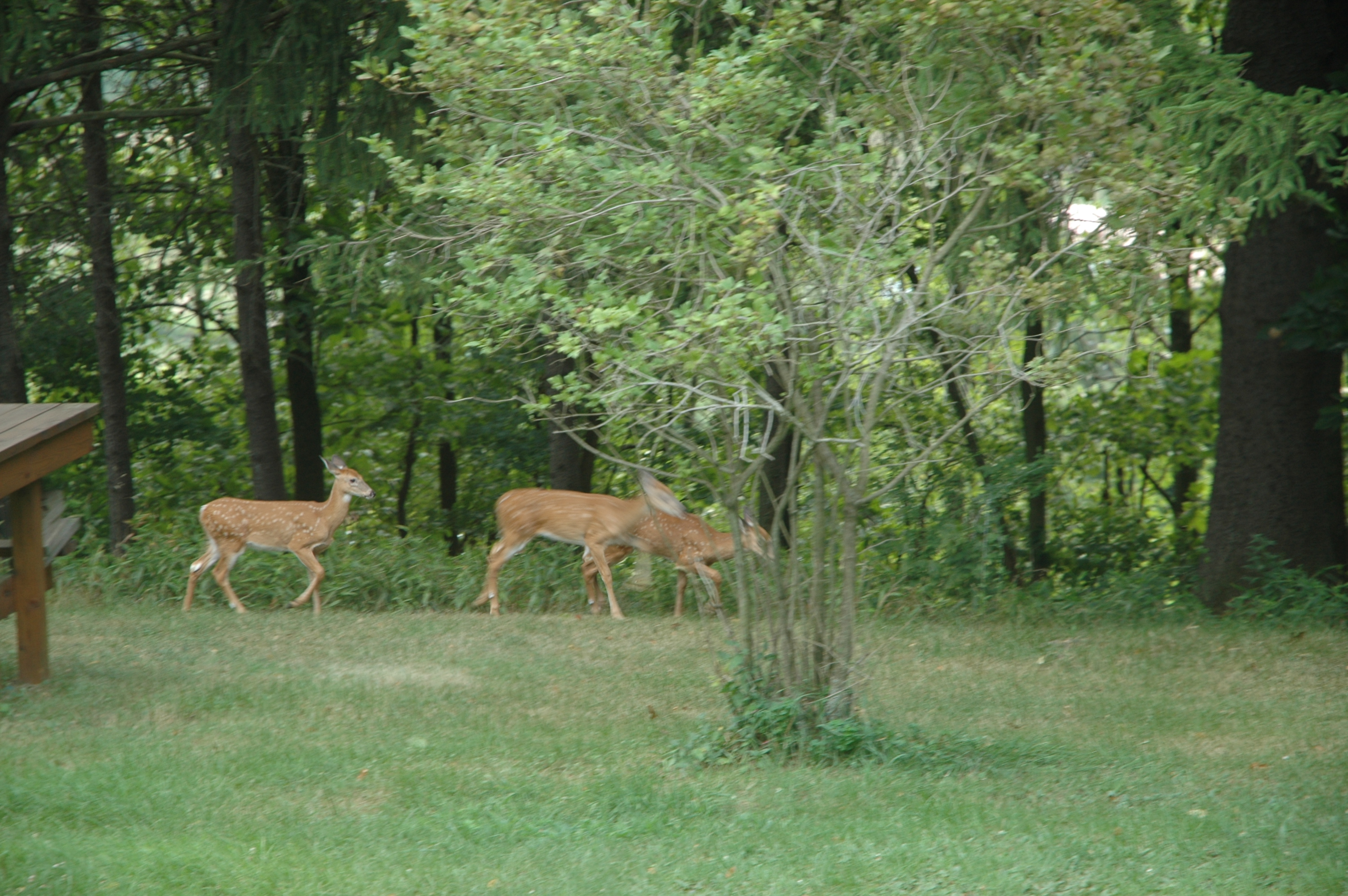There is an ongoing debate in my house. Well, there are a lot of ongoing debates in my house, and especially when it comes to deer. It’s the byproduct of the union of a fanatical deer hunter and a deer biologist.
This particular debate revolves around the cutest kind of deer – fawns. It is common knowledge in our house that does have 2 fawns each spring. And the data bear this out. The majority of adult females give birth to twins. Of pregnant females in PA, 75% of adult females carry twins, 23% carried a single, and 2% carried triplets. There were 2 reports of quadruplets in over 6,200 females examined (0.032%).
The sticking point of our debate is triplets. Every time 3 fawns are seen in the vicinity of a doe, my partner proclaims triplets! This sends me into a spiral of probabilities pointing out faulty assumptions on his part. Of course, he counts on this response and pokes the bear whenever the opportunity arises.
Duane was nice enough to do the math on the seeing triplets previously. By his calculations, seeing triplets in July (~9 weeks old) is between 1 in 120 to 1 in 185. Hardly common but way better than the recent Megamillion odds.
Recently a reader sent us a video of a doe. Take a look.
Now before you get all excited with this “evidence” of quadruplets, let me share a little anecdote from my grad school days. Part of my thesis was to look at maternal behavior. I had collared adult females in the winter and the plan was to track their movements to find their fawns in the spring. In theory when a doe is ready to give birth, her movements become confined. In my naiveté, I thought I could see this shift, search the area, and find the fawns. Yeah, that didn’t happen. There were a lot of deer in my study area and finding a fawn in the area of a collared doe was no guarantee it was her fawn.
One evening while sitting in a stand recording observations, I spotted a piebald fawn. One of my collared does was in the field as well. Low and behold, the fawn moved to nurse on the collared doe. A naturally marked fawn paired with a collared doe – Jackpot! No need to worry about catching that one. As I continued to watch, another fawn began to nurse, then another, and another. What was happening?!?!
The collared doe turned around, observed the milk party, and promptly ended it. Being a fawn is tough and they have no shame in stealing a free meal. Does on the other hand are stingy milk wagons because making that stuff is expensive!
Back to our video. It was sent to us in early July. These fawns are in excellent condition and are seen feeding on vegetation. At ~5+ weeks old, this is right on schedule. Rumens are completely formed at 3 weeks, and weaning is well underway. Unlike my experience with multiple deer in a field with multiple fawns, there is only one very slender doe. Are they all hers? [the report is this group continues to be seen together]
Duane did the math on this too. I did a quick literature search and found a study in Illinois that noted 1% of does had quadruplets. Remember, PA had two. Combining that with fawn survival, you’d have to check 10,000 to 20,000 females to expect to see 1 with quadruplets in August. Again, better than your lottery winning odds but still a long shot by any measure.
-Jeannine Fleegle
Wildlife Biologist
PA Game Commission
